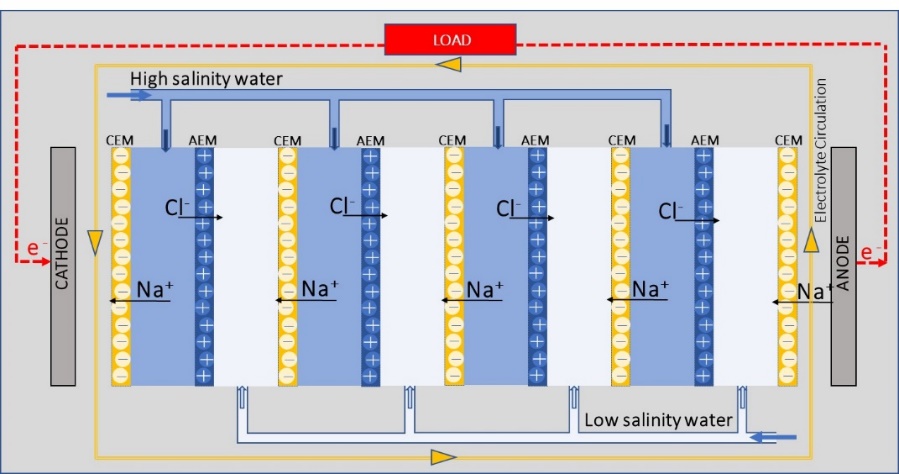Found 1 results
Article
13 March 2024The Potential of Salinity Gradient Energy Using Reverse Electrodialysis to Generate Electricity for Seawater Desalination Plants, an example from Western Australia
Seawater desalination plays a vital role in addressing the increasing global demand for freshwater. However, the energy-intensive nature of desalination processes and the generation of brine by-products pose environmental challenges. In Western Australia (WA), approximately 48% of freshwater is supplied by two seawater desalination plants employing the energy-intensive seawater reverse osmosis (SWRO) method. These plants are powered by a combination of renewable and conventional energy sources. Typically, the most efficient approach for desalination plants involves a blend of renewable energy sources. Salinity gradient energy (SGE) harnessed through the reverse electrodialysis (RED) system, which derives energy from mixing waters with varying salinities, has emerged as a potential solution. RED utilizes ion-exchange membranes to convert the chemical potential difference between two solutions into electric power. The net specific energy of SGE, calculated based on the Gibbs free energy associated with mixing seawater and wastewater, is estimated at approximately 0.14 kWh per cubic metre of brine for SWRO desalination plants. The combined SGE potential of WA’s two desalination facilities theoretically amounts to approximately 87.4 MWh of energy. However, due to the inherent limitations of the RED system’s current energy efficiency, only about 2.5% of the desalination plant’s energy requirements can be met through this technique. This paper addresses a significant gap in the literature by analyzing the technical and economic constraints of utilizing salinity gradient energy (SGE) through the reverse electrodialysis (RED) system for seawater desalination plants. This marks the first examination of its kind, shedding light on both the technical feasibility and economic challenges of SGE-RED application in this context. The scientific contribution lies in its innovative approach, integrating technical and economic perspectives to provide an understanding of SGE-RED technology’s potential drawbacks and opportunities. By identifying and tackling these challenges, this paper aims to pave the way for optimizing SGE-RED systems for practical implementation in seawater desalination plants.
